In this guide, we’ll explore the world of full sun ornamental grasses, delving into tall, medium, and short varieties that can transform your outdoor spaces into vibrant, dynamic gardens.
Tall Ornamental Grasses
Tall ornamental grasses can add impressive height and drama to any landscape design, acting as architectural elements that create focal points and add structure. Their height provides a natural screen or privacy barrier while simultaneously softening hardscapes and adding movement. With the wind rustling through their plumes, these grasses bring a sense of serenity and connection to nature. Here’s a deep dive into some popular tall ornamental grasses that thrive in full sun conditions.
Maiden Grass (Miscanthus sinensis)
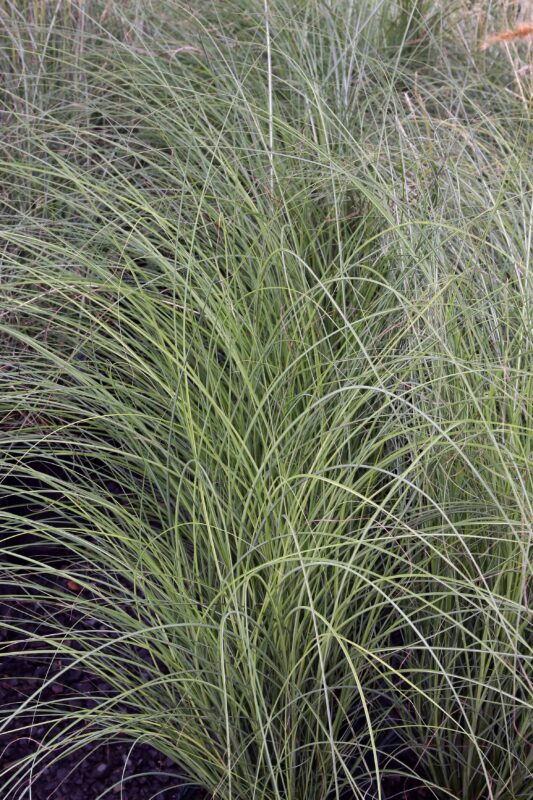
Maiden Grass is a perennial favorite in ornamental gardens, known for its graceful form and beautiful plumes. This grass can range from 4 to 6 feet in height, making it a spectacular anchor plant in any garden. Its slender, arching leaves start as a vibrant green in summer but metamorphose into stunning shades of gold and bronze during the fall, creating a striking contrast with other autumn foliage. What’s particularly delightful about Maiden Grass is its feathery flower spikes, which appear in late summer and can last well into winter, providing texture and interest during the colder months.
Growing Maiden Grass is relatively easy, as it adapts to a variety of soil conditions, including clay, loam, and sandy soils. It thrives in full sun, promoting healthy growth and vibrant coloration. When planting Maiden Grass, consider using it as a backdrop in perennial beds, around patios, or as part of a transitional space between taller trees and shorter ground covers. Pruning it back in late winter or early spring encourages healthy growth and keeps the plant looking fresh.
Switchgrass (Panicum virgatum)
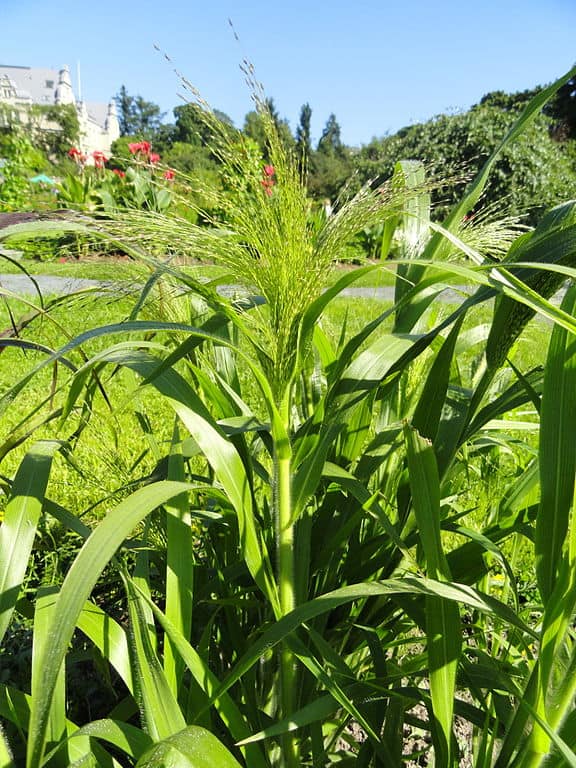
Switchgrass is a robust, native North American grass well-regarded for its adaptability and ecological significance. Typically growing between 3 to 6 feet tall, it plays a crucial role in prairie ecosystems, providing habitat and forage for wildlife. The clumping habit of Switchgrass makes it a great option for informal or naturalistic gardens, while its airy flower heads add a touch of elegance.
In late summer, Switchgrass showcases its delicate, airy flower panicles that change from green to a lovely golden hue, creating a visually stunning display. Its deep-rooted growth habit makes it drought-resistant and excellent for controlling soil erosion, making it a perfect choice for sloping sites. Switchgrass thrives in full sun and well-drained soils, making it versatile enough to be used in various landscape designs. When grouped in patches or planted en masse, this grass can create a breathtaking wave effect, reminiscent of natural grasslands.
Feather Reed Grass (Calamagrostis acutiflora)
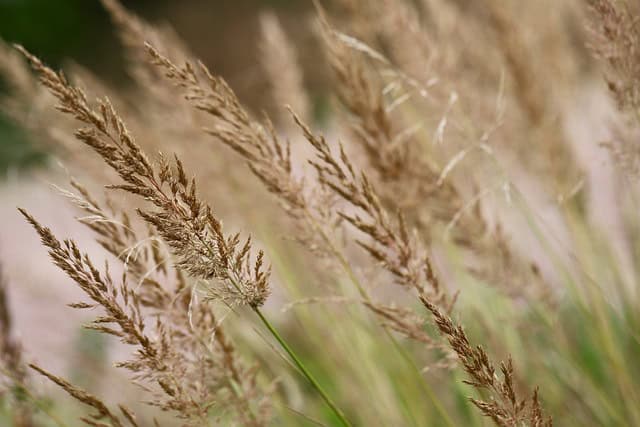
Feather Reed Grass is celebrated for its vertical form and elegant plumes that can reach heights of 3 to 6 feet. The fine, upright growth habit makes it suitable for narrow spaces, while its attractive flower heads add movement and softness to gardens when gently swayed by the breeze. As a warm-season grass, Feather Reed Grass thrives in sunny environments, producing feathery flower spikes in late summer which remain attractive throughout the fall and into winter.
This grass is particularly resilient and tolerates a wide range of soil conditions, including wet and clayey soils, making it a versatile choice for many garden designs. Its robustness and height make it effectively used as a windbreak or in borders to define pathways. For a truly captivating display, consider pairing Feather Reed Grass with perennials that bloom in different seasons, creating layers of color and texture throughout the year.
Ravenna Grass (Saccharum ravennae)
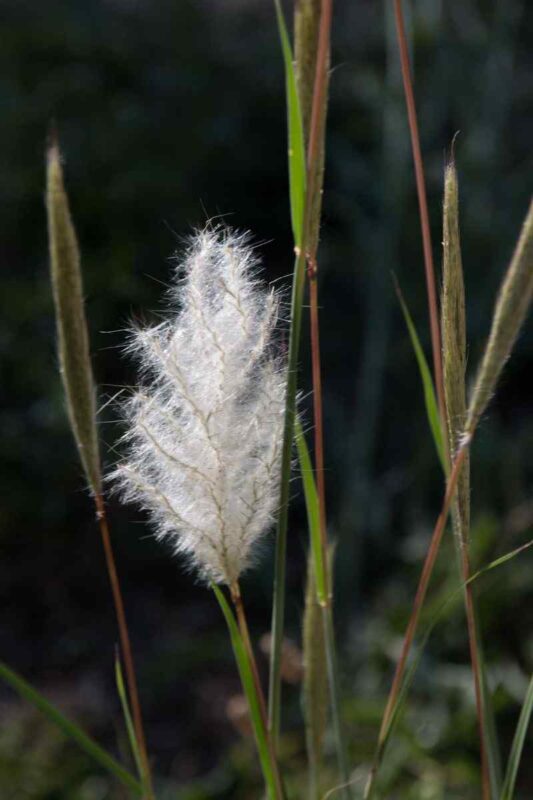
Ravenna Grass adds a bold, tropical feel to gardens with its large, grasses and impressive height of up to 12 feet. Its thick, arching leaves and huge, fluffy flower plumes create a dramatic focal point that can sway gracefully in the wind. This grass produces large flower spikes in late summer, resembling soft bottle brushes that catch the light beautifully. Ravenna Grass thrives in well-drained soils and loves full sunlight, making it an excellent choice for sunny borders or as a specimen plant.
One thing to note about Ravenna Grass is its aggressive spreading habit, so it’s essential to plant it in a contained area or where you don’t mind it taking over a bit. This is especially useful if you want to create a natural privacy screen or windbreak. Combining Ravenna Grass with other large flowering perennials can create a lush, tropical paradise in your garden that attracts pollinators and provides a refuge for birds.
Big Bluestem (Andropogon gerardii)
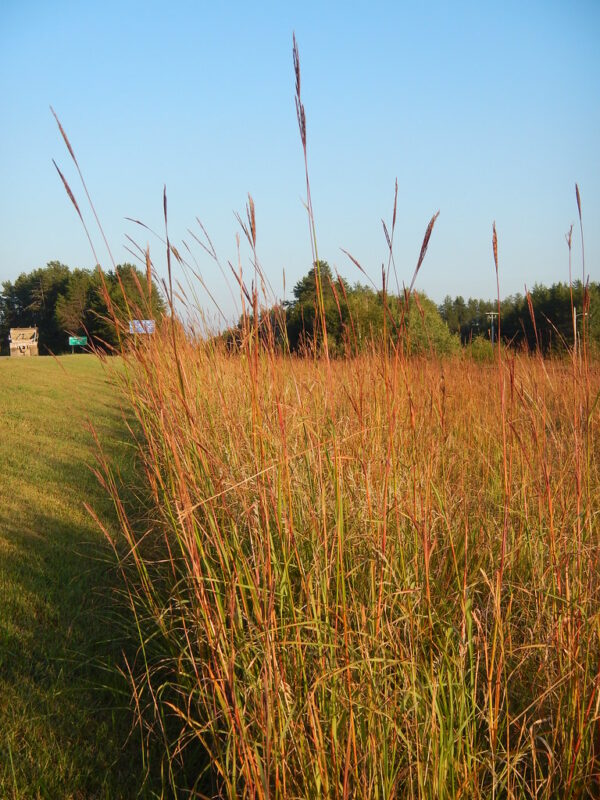
Big Bluestem is the tallest grass of the North American prairies, reaching heights of 5 to 10 feet. This iconic grass is known for its hardy nature, deep root system, and stunning blue-green foliage. Its leaves turn to beautiful shades of orange, red, and burgundy in the fall, providing stunning seasonal interest. The distinctive three-part seed head formed at the top of the plant is reminiscent of a turkey’s foot, making it both unique and easily recognizable.
Big Bluestem’s adaptability makes it a favorite for wildlife gardens as it offers habitat and food for seed-eating birds. Its drought-tolerant nature once established means it needs little maintenance, making it perfect for low-input gardens. When planted in groups, Big Bluestem creates a lush, swaying sea of grass that can fill large areas, buffer noise, and visually connect garden spaces. Pairing it with wildflowers enhances the naturalistic effect and encourages local pollinators.
Medium Ornamental Grasses
Medium ornamental grasses serve as the perfect transitional elements in garden designs. Typically standing between 2 and 4 feet tall, they add layers of interest and texture without overpowering other plants. These grasses can be used to soften edges, fill in gaps, or provide structure amidst flowering perennials. Explore some captivating medium ornamental grasses that excel in sunny environments.
Fountain Grass (Pennisetum alopecuroides)
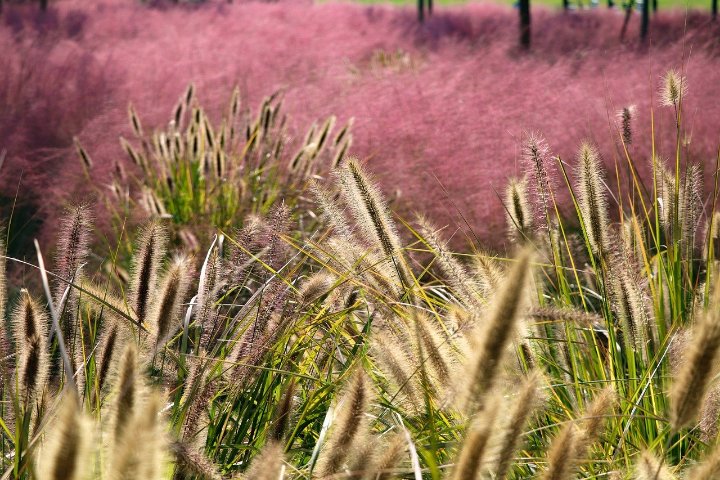
Fountain Grass is celebrated for its graceful, arching Growth habit, resembling a beautiful fountain. Growing to heights of about 3 feet, it adds soft elegance to gardens with its lush foliage and plumed inflorescences. The flower heads emerge in late summer, taking on beautiful shades of beige or pink and creating a soft halo that catches the light perfectly. The texture of Fountain Grass is particularly appealing when combined with the bold foliage of perennials or shrubs, creating a harmonious balance in garden design.
Fountain Grass is a low-maintenance plant that thrives in full sun and prefers well-drained soils. It can tolerate drought once established, making it ideal for water-wise gardens. When using Fountain Grass, consider intermixing it with flowering perennial plants to create striking visual combinations. Its rounded form and fluid motion create beautiful contrasts, especially in drift planting designs where multiple plants create a flowing, unified look.
Little Bluestem (Schizachyrium scoparium)
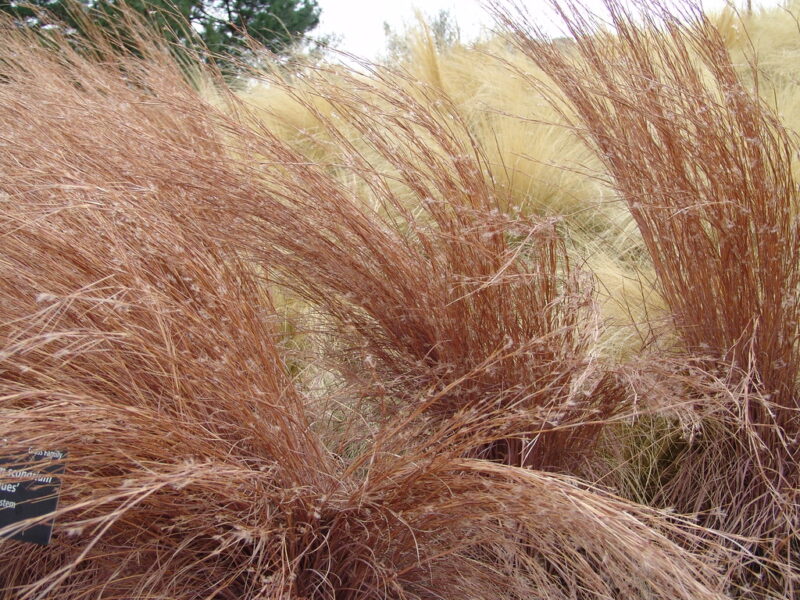
Little Bluestem is a charming native grass admired for its stunning visual appeal and adaptability. Typically growing to 2 to 4 feet, this ornamental grass stands out with its beautiful blue-green color that transitions to vibrant reds and oranges in fall. Unlike many other grasses, it provides an ornamental display throughout the winter as well, when it becomes a soft tan color that adds warmth to the winter landscape.
This grass is particularly beneficial for wildlife, providing habitat for various bird species and supporting local biodiversity. Little Bluestem thrives in full sun and is drought-tolerant, making it a prime candidate for low-maintenance gardens. It is perfect for prairie gardens, where it can be planted in groups to create large, sweeping drifts resembling its native prairie habitat. Pairing Little Bluestem with other native flowering plants creates a rich tapestry of color and texture that changes with the seasons.
Blue Grama Grass (Bouteloua gracilis)
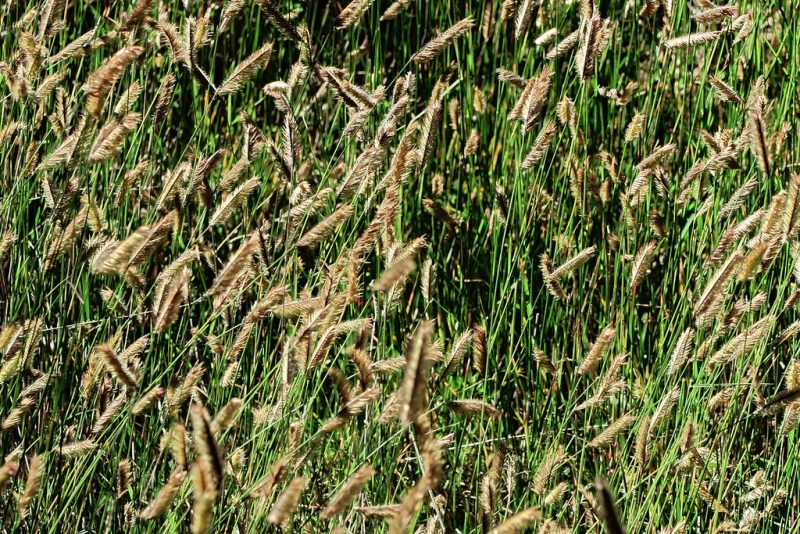
Blue Grama Grass is a compact and charming grass recognized for its unique “eyelash” seed heads, which appear in summer. Standing around 2 feet tall, this grass lends a fine, delicate texture that works beautifully in both formal and informal settings. Blue Grama Grass is drought-resistant and thrives in sandy or rocky soils, making it an excellent option for xeriscapes and low-water gardens. It enjoys a sunny location, making it a low-maintenance option for gardeners who seek resilience and beauty.
Culturally, Blue Grama has been an essential part of the Great Plains ecosystems and wildlife, attracting beneficial insects and supporting local wildlife. Its lovely seed heads bring delicate beauty, making it ideal for mixed borders and naturalistic gardens. You can also plant Blue Grama in groups, allowing its unique form and texture to play a significant role in your landscape aesthetic.
Pink Muhly Grass (Muhlenbergia capillaris)
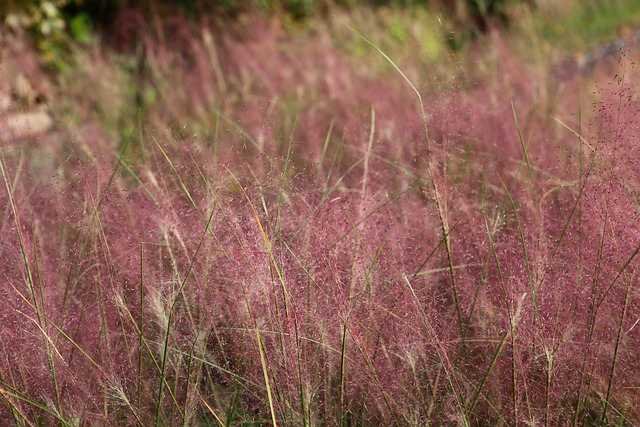
Pink Muhly Grass is a stunning addition to sunny gardens, recognized for its cloud-like plumes that appear in late summer and persist into fall. Growing to about 3 feet tall, this grass stands out with its vibrant pink flower spikes, which create an ethereal effect when backlit by the sun. With its fine-textured foliage, Pink Muhly Grass adds softness to the landscape, contrasting beautifully with bolder perennials or larger shrubs.
This lovely grass thrives in well-drained soil and full sun, making it an ideal choice for low-maintenance landscapes. It’s perfect for incorporating into mass plantings, where the billowing plumes can create waves of texture and color. When combined with other fall-blooming plants, Pink Muhly Grass enhances the visual appeal of the landscape, attracting pollinators and offering mesmerizing movement reminiscent of the natural prairie sways.
Prairie Dropseed (Sporobolus heterolepis)
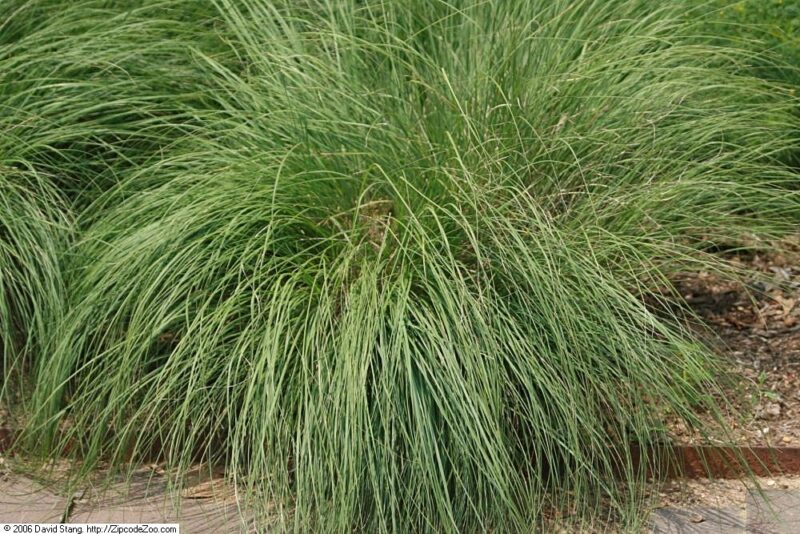
Prairie Dropseed is a graceful, clumping grass that typically grows 2 to 3 feet tall, offering a nuanced and delicate addition to full sun gardens. Its fine-textured foliage emits a subtle fragrance when gently disturbed—an endearing quality that adds a sensory element to the garden. This grass produces airy seed heads in late summer that blush gold in the sunlight, dancing lightly in the breeze.
Prairie Dropseed is drought-tolerant and thrives in well-drained soils, making it an attractive option for low-water gardening and xeric plantings. It’s widely used in naturalized settings, where it can seamlessly blend with wildflowers and other native plants. Its tufted habit provides great visual interest, especially when planted in groups, creating a beautiful meadow-like aesthetic that attracts birds and beneficial insects alike.
Short Ornamental Grasses
Short ornamental grasses, typically standing at less than 2 feet tall, are excellent tools for framing and softening garden edges. These versatile grasses can serve a multitude of roles in design, from border plantings and ground covers to containers and accent pieces. In the following sections, we’ll highlight some delightful short ornamental grasses that thrive in full sun conditions.
Blue Fescue (Festuca glauca)

Blue Fescue is a compact ornamental grass that captivates gardeners with its stunning blue-gray hues, providing a cool and calming element in sunny landscapes. Typically growing to around 1 foot tall, it forms tightly compact clumps that can be used as a border, filler, or even in containers. The fine leaves create a soft texture, contrasting beautifully with larger flowering perennials or bolder foliage plants.
Blue Fescue thrives in full sun and prefers well-drained soils, making it an ideal candidate for rock gardens and sunny borders. Its drought-tolerant nature, once established, reduces the need for frequent watering, providing convenience for busy gardeners. To add variety, consider blending Blue Fescue with other ornamental grasses in complementary hues or contrasting textures to create compelling visual interest in your garden.
Purple Love Grass (Eragrostis spectabilis)
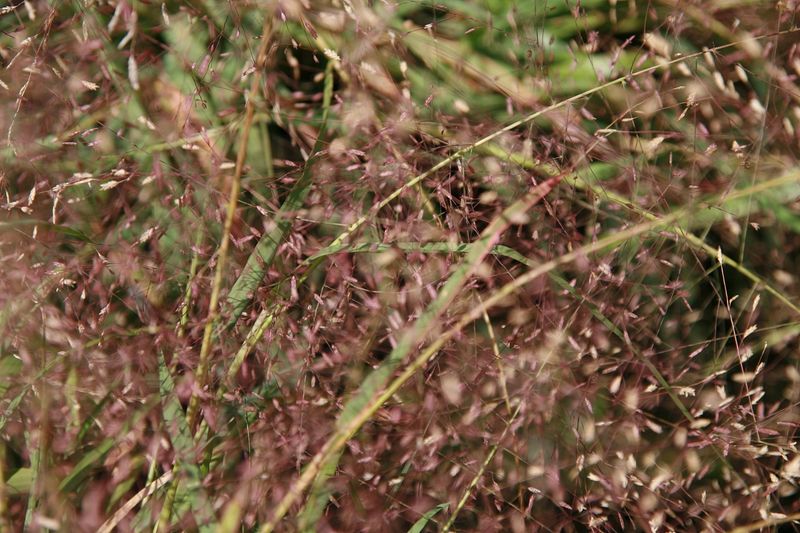
Purple Love Grass is a charming and whimsical addition to sunny gardens. Standing about 1 to 2 feet tall, this grass is celebrated for its airy, wispy appearance, characterized by delicate purple-tinted leaves that vividly transform in the fall. In summer, it produces light feathery seed heads that sway gently, creating inviting movement in the landscape.
This grass adapts well to a range of soil types but prefers dry to moderate moisture levels, making it perfect for well-drained areas. Purple Love Grass thrives in full sun, where its vibrant coloration can truly shine. Ideal for planting in masses, it can create a dreamy, flowing carpet effect. Its ethereal quality pairs well with other native perennials, creating a wildflower garden that supports pollinators while adorning the landscape with beauty.
Japanese Sedge (Carex morrowii)
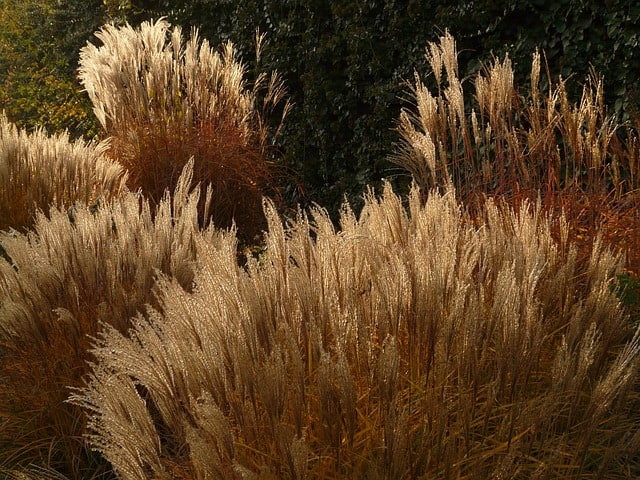
Japanese Sedge is an excellent choice for enhancing sunny water gardens and moist border areas. Although it can tolerate partial shade, this grass truly flourishes in full sun, providing a lush, green touch. Growing about 1 to 2 feet tall, Japanese Sedge features long, narrow leaves that bring a tropical quality to any garden.
This ornamental grass offers versatility, thriving in consistently moist soils, making it suitable for riverbanks or rain gardens. As it spreads, Japanese Sedge creates a beautiful, dense mat that serves as an exceptional ground cover, reducing the need for mulch and maintaining soil moisture. Consider pairing it with colorful perennials and bold foliage plants for a harmonious composition, adding to the visual layering of your garden.
Dwarf Fountain Grass (Pennisetum alopecuroides ‘Little Bunny’)

The Dwarf Fountain Grass is a smaller version of the iconic Fountain Grass, yielding all its graceful beauty in a compact form. Reaching a height of about 1 to 2 feet, it boasts the same lush, arching foliage and feathery plumes that dance gracefully in the wind. This grass adds softness and movement, ideal for container arrangements and smaller garden spaces.
Dwarf Fountain Grass thrives in full sun, and once established, exhibits excellent drought tolerance. Its vibrant flower spikes can appear in various colors, including soft cream, pink, and even purples, adding joyful color to your garden. Additionally, this grass works beautifully in mixed plantings, contributing to a layered aesthetic that draws the eye across the landscape, enhancing the overall appeal of your garden.
Japanese Sweet Flag (Acorus gramineus)
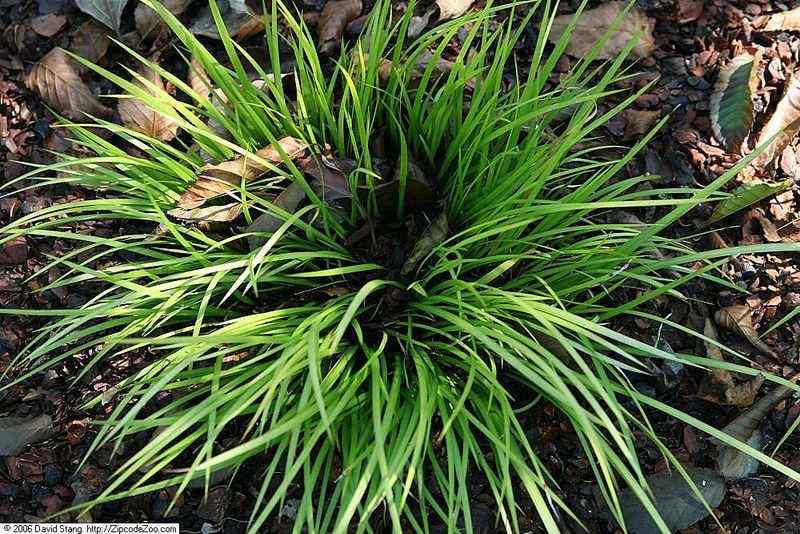
Japanese Sweet Flag is an ornamental grass that brings elegance and a unique sensory element to gardens. Growing about 1 foot tall, this grass features narrow, linear leaves that showcase attractive green-and-gold stripes, adding visual intrigue. Its preference for consistently moist soil makes it a perfect choice for areas near ponds, fountains, or bog gardens, and it tolerates full sun with proper moisture levels.
This grass adds a wonderful texture to water features and creates a vibrant border, enhancing the lush feeling of the landscape. The fragrant foliage produces a sweet scent when brushed against, adding an aromatic experience for garden visitors. Japanese Sweet Flag can be used in mass plantings or as a single feature plant, allowing for creative design possibilities and drawing attention to its beauty.
Conclusion
Full sun ornamental grasses provide a bounty of opportunities for enhancing your garden landscape. They excel in sunny environments, bringing diverse forms, colors, and textures that create dynamic, low-maintenance displays. Whether you opt for the towering majesty of tall grasses or the enchanting charm of shorter varieties, these plants can infuse your garden with life and vitality.





